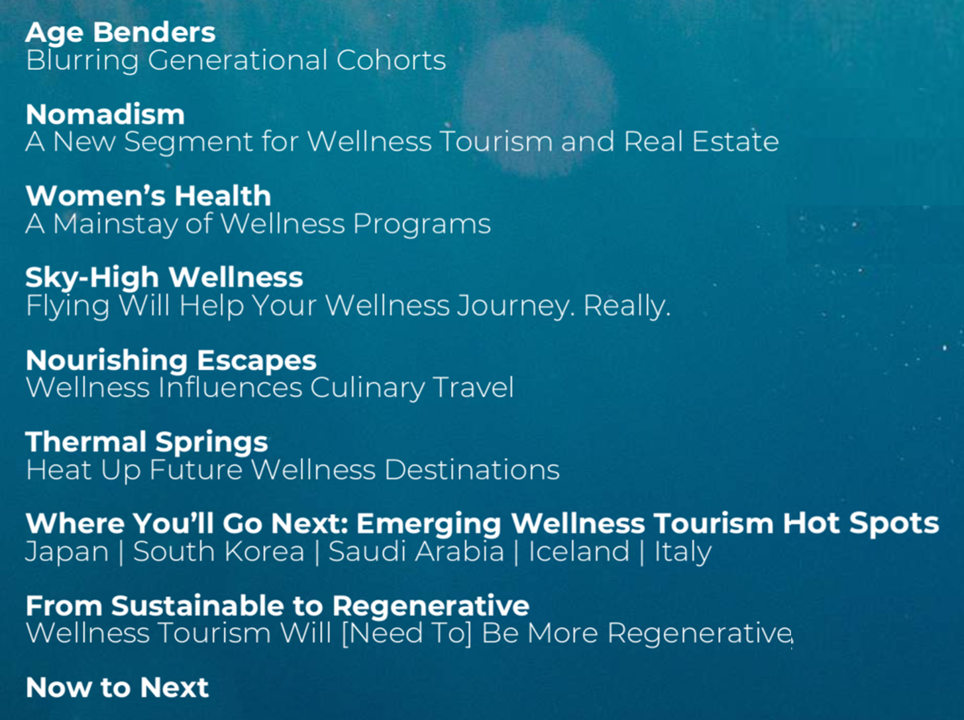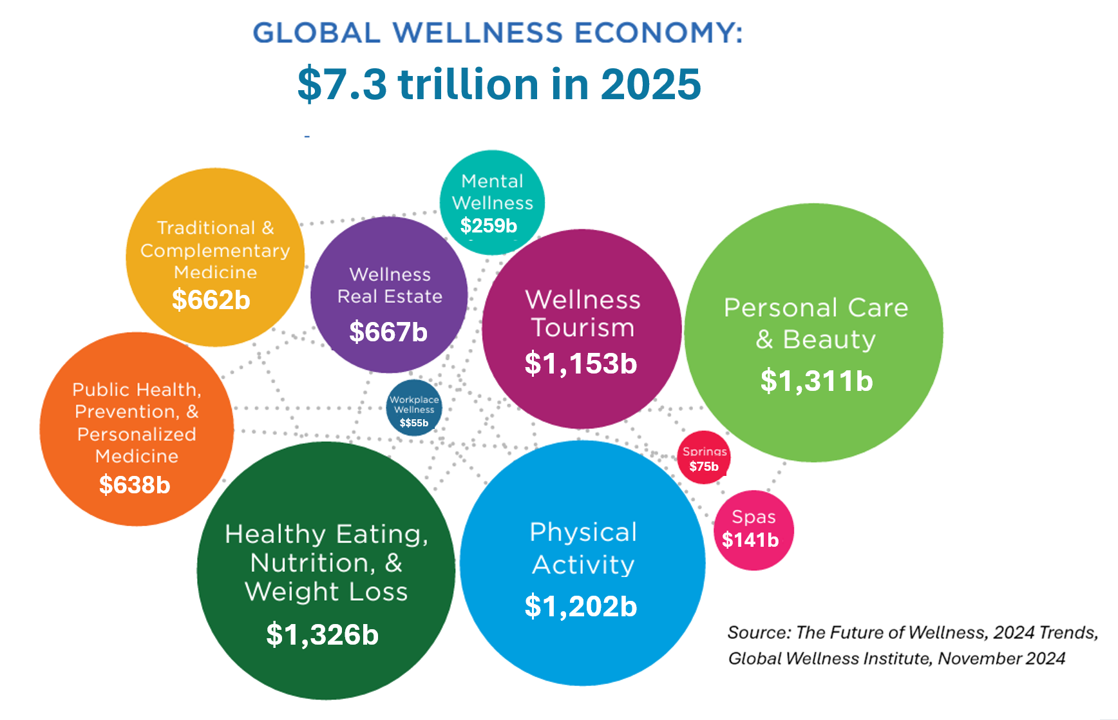Healthy eating and weight loss, personal care and beauty, exercise and physical activity, and wellness tourism are the four biggest components of the world’s wellness economy, quantified in The Future of Wellness, 2024 Trends, the perennial report from the Global Wellness Institute (GWI). 
Here’s the bubble chart, which I’ve updated with the 2025 data so we get a sense of what the coming year will bring for the eleven total segments that make up the global wellness market.
The fine print of the projections for these areas identifies the annual growth rates for each segment: the fastest-growing area expected between 2022 and 2027 will be wellness real estate, expanding at over 17 a year to 2027. Following wellness real estate, we see that wellness tourism will expand by 16.6% a year, followed by thermal/mineral springs (at 14.3%), and mental wellness, expanding by 12.8% per year to 2027. The other areas are expected to grow in terms of single digits.

The report lays out eight thematic trends covering wellness in the coming few years, shown in the second graphic. These address age-bending, nomadism for healthy travel and real estate, women’s health opportunities, healthy flying, food for health, thermal springs as a growing travel destination, deep dives into several wellness tourism “hot spots,” and looking toward more sustainable and regenerative tourism.
Beth McGroarty, VP for research and forecasting at GWI, wrote the preface for the report and noted that, “after 15+ years helping oversee this report, I’ve seen more shakeups in wellness in the last year than I have in the last decade.”
Beth is observing a segmentation of wellness based on generational, income, and gender gaps that she notes are widening. Key accelerators she points to include,
- The fast-entrance and turbocharging impact of medicine entering wellness — for the longevity segment, and certainly for the healthy eating/nutrition pillar (think: GLP-1 drugs). A wonderful writer, Beth uses the apt description. “medicine muscles in.”
- Second, there is more “soft-care,” the growth of more simple, down-to-earth (literally) services and products such as retreats and apps focused on social and emotional well-being.
- Third, sustainability and regenerative approaches are features in a growing array of wellness programs, especially embedded in and inspiring the wellness real estate and tourism segments. Think: climate-adaptive wellness.
Beth concludes with this timely message:
“2024 looks to be one stressful, complex year, with rising geopolitical unrest and climate disasters, and 50+ countries holding divisive elections that will test the future of democracy.
“People will seek wellness, peace and healing.”
Amen and amen.
The full report is available on the GWI website for $100 and is a good investment for those of us working across the health/care ecosystem with the person – patient – caregiver – health citizen at the center of our planning and doing.





 I was so grateful and joy-ful to join my long-time brother mischief-maker Matthew Holt and three other old health care leader friends on the Health Care Blog Gang webcast, #Election2024 (and Halloween!) edition. We covered a lot of ground as Matthew always does, with a special brainstorm about the very momentous election just a few days before November 5, 2024.
I was so grateful and joy-ful to join my long-time brother mischief-maker Matthew Holt and three other old health care leader friends on the Health Care Blog Gang webcast, #Election2024 (and Halloween!) edition. We covered a lot of ground as Matthew always does, with a special brainstorm about the very momentous election just a few days before November 5, 2024. Thank you, Trey Rawles of @Optum, for including me on
Thank you, Trey Rawles of @Optum, for including me on  I was invited to be a Judge for the upcoming
I was invited to be a Judge for the upcoming